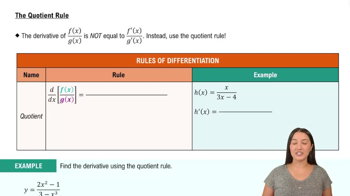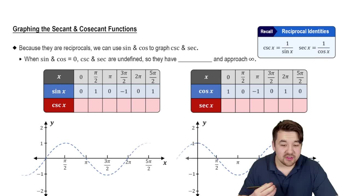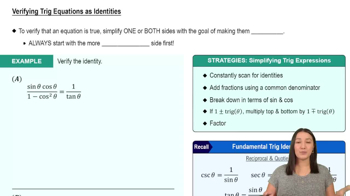An object oscillates along a vertical line, and its position in centimeters is given by y(t) = 30(sint - 1), where t ≥ 0 is measured in seconds and y is positive in the upward direction.
Find the velocity of the oscillator, v(t) =y′(t).
 Verified step by step guidance
Verified step by step guidance Verified video answer for a similar problem:
Verified video answer for a similar problem:



 3:53m
3:53mMaster Derivatives of Sine & Cosine with a bite sized video explanation from Patrick
Start learning